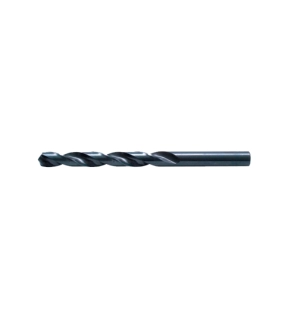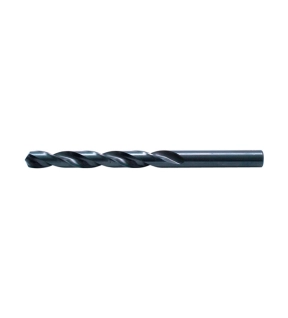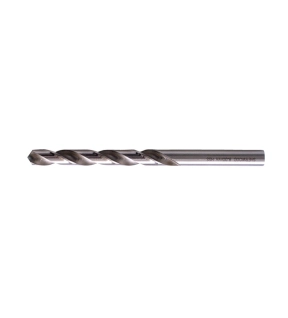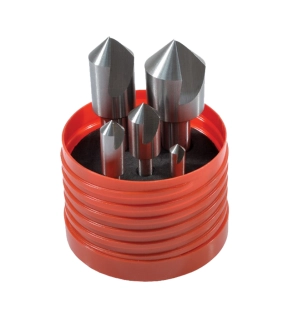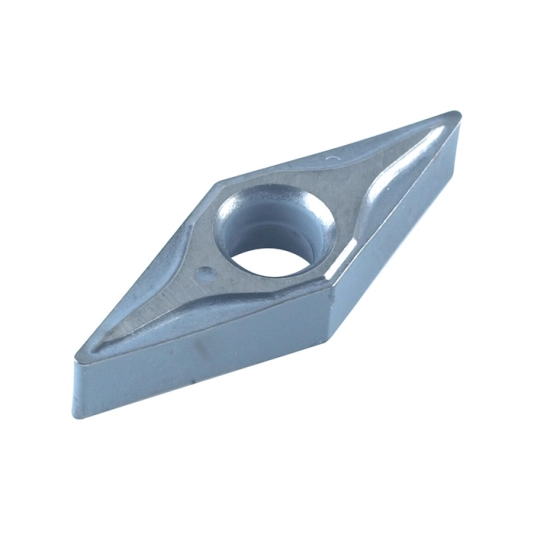
Cutting Tools
Yamaloy VNMG 12T304-NF1, Turning Insert, Grade QX500, Cermet, 35° Rhombic
VNMG Turning Inserts
35° Rhombic Insert
Insert Grades QX500
(ISO P10-P25) Cerment. For high speed finishing and light cutting. Will remain a high class surface finish. Mainly used on steels and can be applied to finish some Stainless steels and Cast Irons.
Chip Breaker: NFI. Application: Finish.
35° Rhombic Insert
Insert Grades QX500
(ISO P10-P25) Cerment. For high speed finishing and light cutting. Will remain a high class surface finish. Mainly used on steels and can be applied to finish some Stainless steels and Cast Irons.
Chip Breaker: NFI. Application: Finish.
Download
Produk Lainnya
Sherwood Jobber Drill, 2.8mm, Normal Helix, High Speed Steel, Black Oxide
The J100 Series are general purpose HSS straight shank drills with a black oxide finish. Ideal for applications involving steel (including cast steel) cast iron (including malleable cast iron) as well as nickel, brass aluminium alloys and graphite. Their 118° point allows for precise hole alignment and reliable cutting performance whilst the black oxide coating helps reduce heat by retaining coolant on the tool surface. The coating also helps reduce the risk of the tool staining.
Features and Benefits
• High speed steel construction for increased tool durability
• Point angle of 118° for precise holemaking and precision cutting
• Black oxide coating helps aid chip flow, reduce heat and prevent staining
• Ideal for applications involving steel, iron, nickel, brass, aluminium alloy and graphite
Typical Applications
• Cutting and drilling
• Ferrous materials
• Steel
• Iron
• Nickel
• Brass
• Aluminium alloy
• Graphite
Notes
• Available in sizes 0.25mm -20.00mm
Standards
• Manufactured to BS 328/DIN338RN
Features and Benefits
• High speed steel construction for increased tool durability
• Point angle of 118° for precise holemaking and precision cutting
• Black oxide coating helps aid chip flow, reduce heat and prevent staining
• Ideal for applications involving steel, iron, nickel, brass, aluminium alloy and graphite
Typical Applications
• Cutting and drilling
• Ferrous materials
• Steel
• Iron
• Nickel
• Brass
• Aluminium alloy
• Graphite
Notes
• Available in sizes 0.25mm -20.00mm
Standards
• Manufactured to BS 328/DIN338RN
Sherwood Jobber Drill, 10.5mm, Normal Helix, High Speed Steel, Black Oxide
The J100 Series are general purpose HSS straight shank drills with a black oxide finish. Ideal for applications involving steel (including cast steel) cast iron (including malleable cast iron) as well as nickel, brass aluminium alloys and graphite. Their 118° point allows for precise hole alignment and reliable cutting performance whilst the black oxide coating helps reduce heat by retaining coolant on the tool surface. The coating also helps reduce the risk of the tool staining.
Features and Benefits
• High speed steel construction for increased tool durability
• Point angle of 118° for precise holemaking and precision cutting
• Black oxide coating helps aid chip flow, reduce heat and prevent staining
• Ideal for applications involving steel, iron, nickel, brass, aluminium alloy and graphite
Typical Applications
• Cutting and drilling
• Ferrous materials
• Steel
• Iron
• Nickel
• Brass
• Aluminium alloy
• Graphite
Notes
• Available in sizes 0.25mm -20.00mm
Standards
• Manufactured to BS 328/DIN338RN
Features and Benefits
• High speed steel construction for increased tool durability
• Point angle of 118° for precise holemaking and precision cutting
• Black oxide coating helps aid chip flow, reduce heat and prevent staining
• Ideal for applications involving steel, iron, nickel, brass, aluminium alloy and graphite
Typical Applications
• Cutting and drilling
• Ferrous materials
• Steel
• Iron
• Nickel
• Brass
• Aluminium alloy
• Graphite
Notes
• Available in sizes 0.25mm -20.00mm
Standards
• Manufactured to BS 328/DIN338RN
Sherwood Jobber Drill, 13mm, Normal Helix, High Speed Steel, Bright
Series J100 - Metric general purpose drills for steels, cast steel, grey cast iron, malleable cast iron, nickel brass, aluminium alloy and graphite.
Features and Benefits
• High speed steel construction with bright finish for increased toughness
• Supplied in the as-ground condition for use with non ferrous materials
Standards
• Manufactured to BS 328/DIN338RN
Notes
• Drills with a bright finish are supplied in the as-ground condition and such tools are used generally in the machining of non-ferrous materials.
Features and Benefits
• High speed steel construction with bright finish for increased toughness
• Supplied in the as-ground condition for use with non ferrous materials
Standards
• Manufactured to BS 328/DIN338RN
Notes
• Drills with a bright finish are supplied in the as-ground condition and such tools are used generally in the machining of non-ferrous materials.
Sherwood Countersink Set, Countersink, Straight Shank, Set of 5, High Speed Steel, Uncoated
A quality range of single flute countersinking bits available in nine individual sizes and as a five piece set for use in the deburring and chamfering of most metals and plastics. Manufactured from high speed steel for durability and performance. Inclusive angle 90°.


